
If you are a business owner, here are some facts and figures that may interest you:
- It has been estimated that the UK wastes £12 billion on electricity every year. (Source: Fresh Business Thinking)
- The average small business spends roughly 10% of its total overheads solely on electricity. (Source: Fresh Business Thinking)
- Britain's energy reserves are slowly but surely running out (Source: The Economist)
With this information in mind, it's a good idea - from both a financial and an environmental standpoint - for business owners to seek new ways of conserving electricity within the workplace. One effective change that's easy to implement is simply switching things off when you're not using them - this may seem like obvious advice, but it really can make a big difference to your company's energy usage.
Lights are an obvious place to start. If you're using the lights in a room that has plenty of natural light - or, worse still, leaving lights on when nobody's in the room - you are wasting energy, which is costly for your business and bad for the environment. Light switch stickers like these can help to remind you and your employees to swtich off the lights when they're not in use:

Where else could you be saving energy?
- Many appliances use a lot of energy even when switched off. If you're leaving microwaves, televisions, or other items in standby mode instead of turning them off completely, you could well be wasting energy for no reason.
- On a related note, be sure to switch plugs off if they have something plugged into them that isn't being used. This even includes chargers that aren't currently charging anything.
- Be sure to turn off taps properly when not in use - water transportation and treatment uses up energy too!
Useful products from Label Source:
What's been happening in the world of health and safety recently? Here are four top stories from the last 7 days:
Doncaster dig scuppered by asbestos particles
Archaeology enthusiasts in Doncaster were left disappointed this week when asbestos particles were found in soil samples outside St Peter in Chains Church on Chequer Road. This location had been chosen as the site for a dig to "uncover the borough's First World War heritage", but work was halted as soon as those overseeing the dig suspected that potentially harmful debris might be present under the ground. The trenches have now been filled back in.
See also: #BewareAsbestos with Label Source
Aberdeen council fined after near-drowning incident
Aberdeen and Aberdeenshire councils were both hit with hefty fines this week in relation to an incident that occurred in 2012. An 11-year-old boy narrowly avoided death after being found unconscious under the water at Stonehaven outdoor pool; a court found that both the number and positioning of lifeguards at the pool had been insufficient, and the two councils have been fined £9,000 (Aberdeen council) and £4,000 (Aberdeenshire council) for failing to carry out a sufficient risk assessment.
See also: Hazards from Recreational Water-Based Activities
Bruton sculpture too hot to handle
A bronze sculpture in Bruton, Somerset, is to be fitted with a hazard warning sign to remind passers-by that the sculpture's surface can get very hot on sunny days. Man on a Bench by Giles Penny is a popular landmark in Bruton, but the town's mayor is concerned that visitors who sit on the sculpture for a photo opportunity may get a "shock" if the metal has been heated by the sunshine.
See also: Hot Surface Signs & Labels
Warning signs torn down at lake where teenagers drowned
Two teenagers drowned in the Thorpe St Andrew lake in Norfolk this Wednesday, and local news outlets have reported that safety signs placed around the area in question had been vandalised prior to the incident. A representative from the Norfolk Wildlife Trust - who run the site - expressed frustration over failed attempts to warn swimmers of the hazards and discourage them from entering the water. "We put signs up, but they have all been torn down or vandalised," said Brendan Joyce, the Trust's CE. "There were half a dozen signs at key points so there was no way they could have been overlooked."
See also: Cambridgeshire Policeman Highlights the Importance of Water Safety Signs
More health and safety news and insight here >>
Pictured (left to right): St Peter in Chains Church, Doncaster; Stonehaven outdoor pool, Aberdeenshire; Giles Penny's Man on a Bench, Bruton
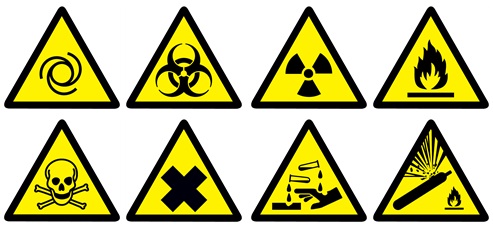
You probably see warning symbols like the ones pictured above practically every day. Granted, some people - such as those who work in labs or hospitals - will see them more often than others, but even if your job seldom exposes you to hazardous substances and situations, it's still important to know what these symbols mean. You never know when that knowledge might come in handy!
So how well do you know your warning symbols? Below, you'll find 10 standard warning symbols (all of which can be found in our Warning Symbol Labels department) - all you have to do is name the hazard that each symbol identifies. We bet you can't get them all!
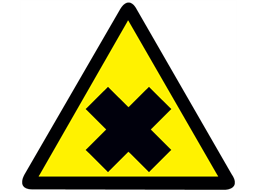
1) Can you guess what this big black cross means? Click here to find out!
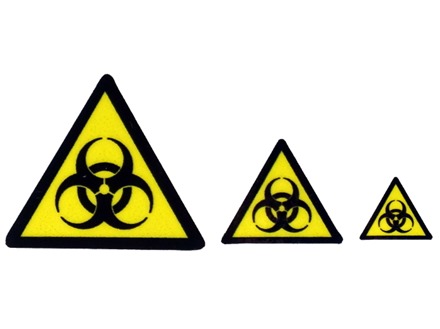
2) This warning symbol is commonly seen in certain films and video games - if you don't already know what it means, find out here!
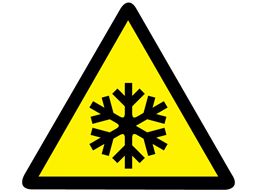
3) Come on - this one's easy, right? Answer here.
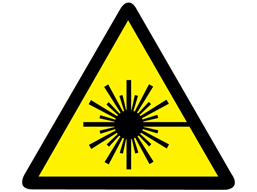
3) Reckon you know what this warning symbol means? Click here to find out whether or not you're correct.
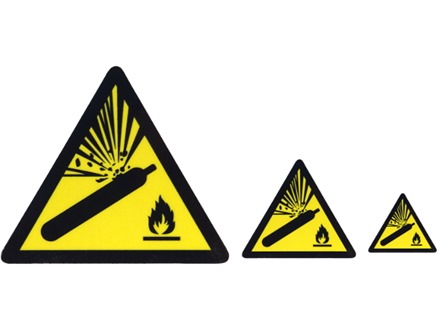
4) Exploding hot dogs? Something to do with cricket bats? Find out the true meaning of this symbol here.
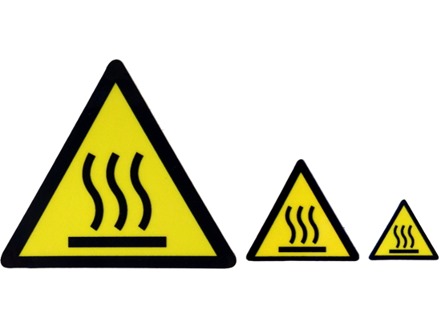
5) Three wavy lines. What are they warning us about? Find out here.
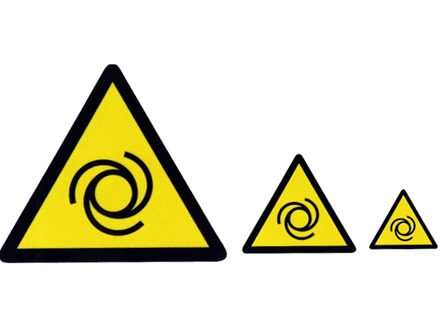
6) Right, we've been going easy on you so far. Here's a tricky one - find out what it means here!
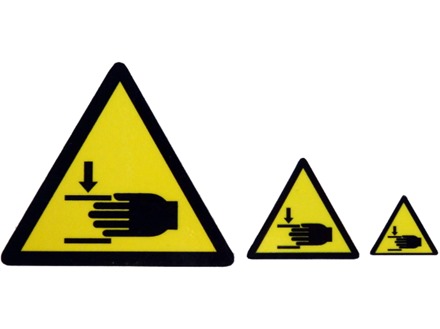
7) Confused? Click here to learn the meaning behind this assemblage of lines, arrows and fingers.
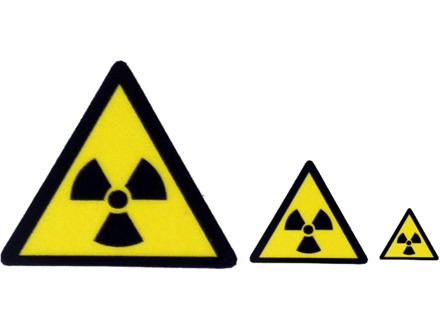
8) Slightly easier, this one - you've almost certainly seen it before, but what does it mean? Find out here.
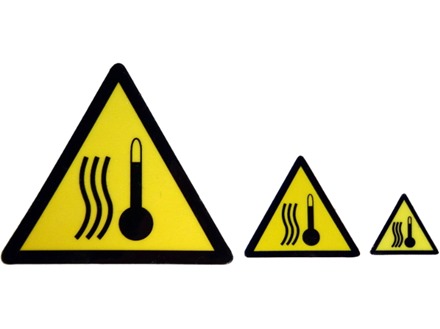
9) More wavy lines! What do they mean? Answer here.
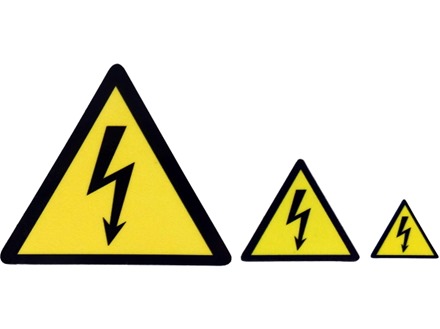
10) We'll end with a nice easy one. We're really hoping you know what this means - check your answer here!
So...how did you do?
0-3 points: Oh dear! Perhaps you need a warning symbol of your own?
4-7 points: Must try harder!
8-9 points: Good work!
10 points: Safety superstar!
Need to brush up your knowledge? Head over to our Warning Symbols department and do some revision for next time!
Most people would agree that safety signs play a critical role in our society. By clearly identifying potential hazards and warning people of danger, signs prevent injuries and fatalities very effectively - it's impossible to calculate how many lives have been saved by health and safety signage.
Still, there is one problem with standard signage that the health and safety industry has yet to properly solve: over-familiarity. We see safety signs practically everywhere we go, and this seems to sharply reduce the impact of those signs.
This issue is most pronounced on our motorways - how often have you ignored or failed to spot a road safety sign whilst driving? - but it's actually present right across the board. From PPE notices on construction sites to the 'Deep Water' and 'Sudden Drop' signs that are still being vandalised throughout the UK, safety signs have become part of the general landscape, and their important information is all too often going unheeded.
So how can this problem be tackled? Many people seem to think that the answer is to use humorous and/or emotive signs that will grab people's attention. One example is the city of Laredo in Texas, USA; the Texas Department of Transportation recently installed a series of comically oversized road signs in the city, complete with such slogans as "Give Us A BRAKE" and "REALLY - STOP MEANS STOP". According to one traffic safety specialist, these 15-foot monstrosities have been erected in the hope that drivers will be encouraged to "be safe", "read the signs", and "focus on the road".
This sort of thing is happening here in Britain, too, although we're taking a slightly different approach:
The sign in the photo above is currently isntalled on a road in Cheshire, and this emotive approach - encouraging motorists to think of the lives they may affect with unsafe driving - is "thought to have led to lower speeds" according to ITV.com
So is it time for novel ideas like these to be implemented everywhere? Perhaps, although it's important to remember that standard safety signs are still very much essential. We at Label Source feel that the best way to use these funny and emotive signs is in conjunction with regular signage; this will ensure that all the essential information is clearly provided even as we attempt to capture imaginations and tug at heartstrings.
See also: French village deploys dark humour to promote road safety
There are instances and locations where there are space restrictions on using the standard size ranges of safety signs. These simply will not fit. So, our range of mini safety signs has been designed to overcome such problems.
These small format signs, in a full range of safety sign classifications, come in a size of 50mm x 200mm, and are manufactured in pvc with an adhesive backing for easy use. All these signs comply with ISO 1710 and the Safety Sign and Signals Regulations 1996.

They cover a comprehensive range of safety requirements including;
Fire equipment signs for pinpointing the location of fire extinguishers, fire alarms and fire points.
Mandatory signs can be used to indicate the use of personal protective equipment, the use of guards on equipment, as well as access points such as fire doors, housekeeping, and personal hygiene.
Prohibition safety signs cover restrictions on smoking, drinking water, access, and use of mobile phones.
Safe condition safety signs determine fire emergency access points and escape routes, the location for first aid, emergency stop cut off points and drinking water.
Hazard warning safety signs identify the risks and dangers from electricity (electric shock, high voltage), from hazardous substances (toxic, harmful chemicals), and physical hazards such as slips, trips, and falls and scalds from hot water.
These products have been used in a wide variety of office, commercial and industrial locations to assist in complying with health and safety guidelines, and providing employees, customers and the general public with visible safety information.